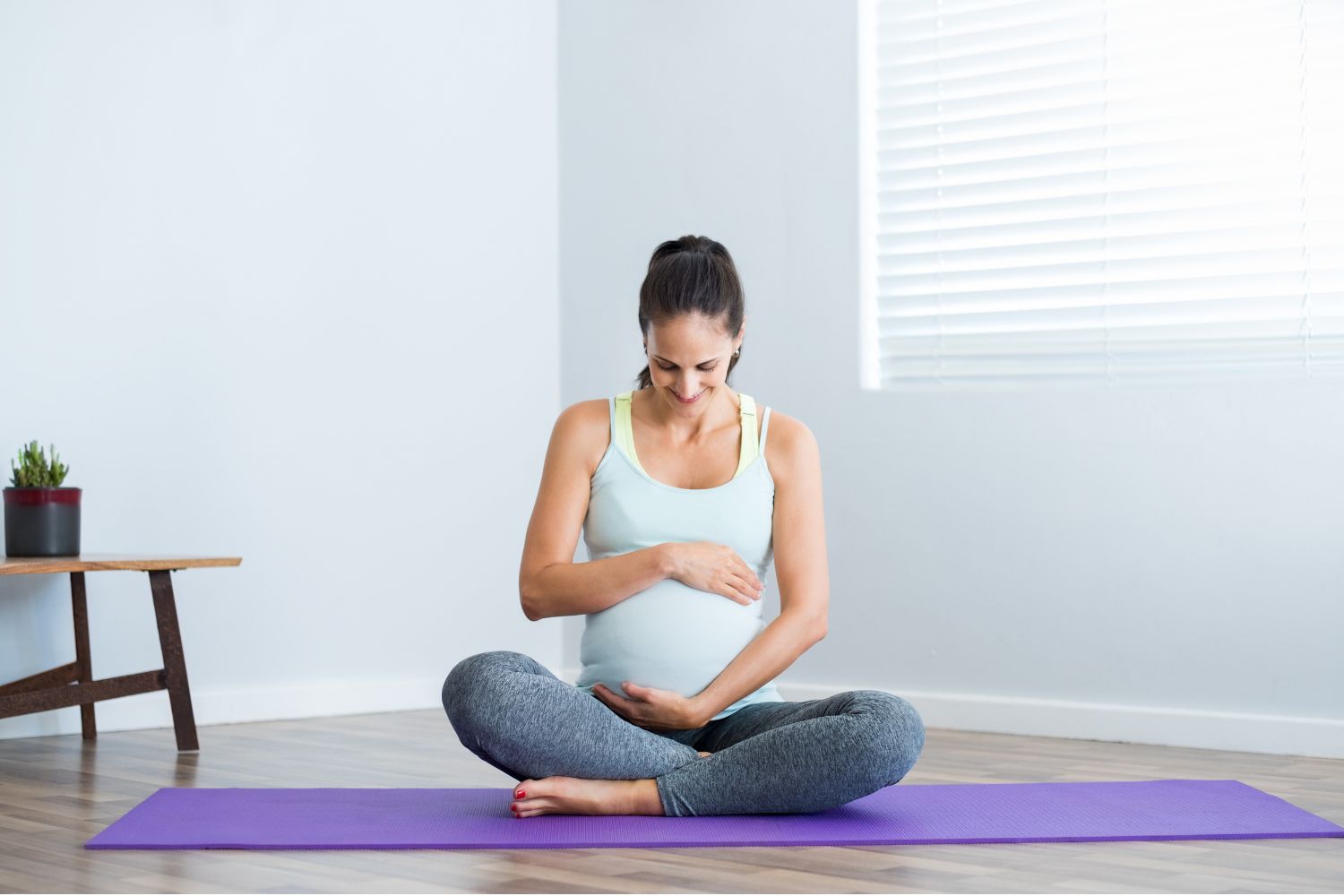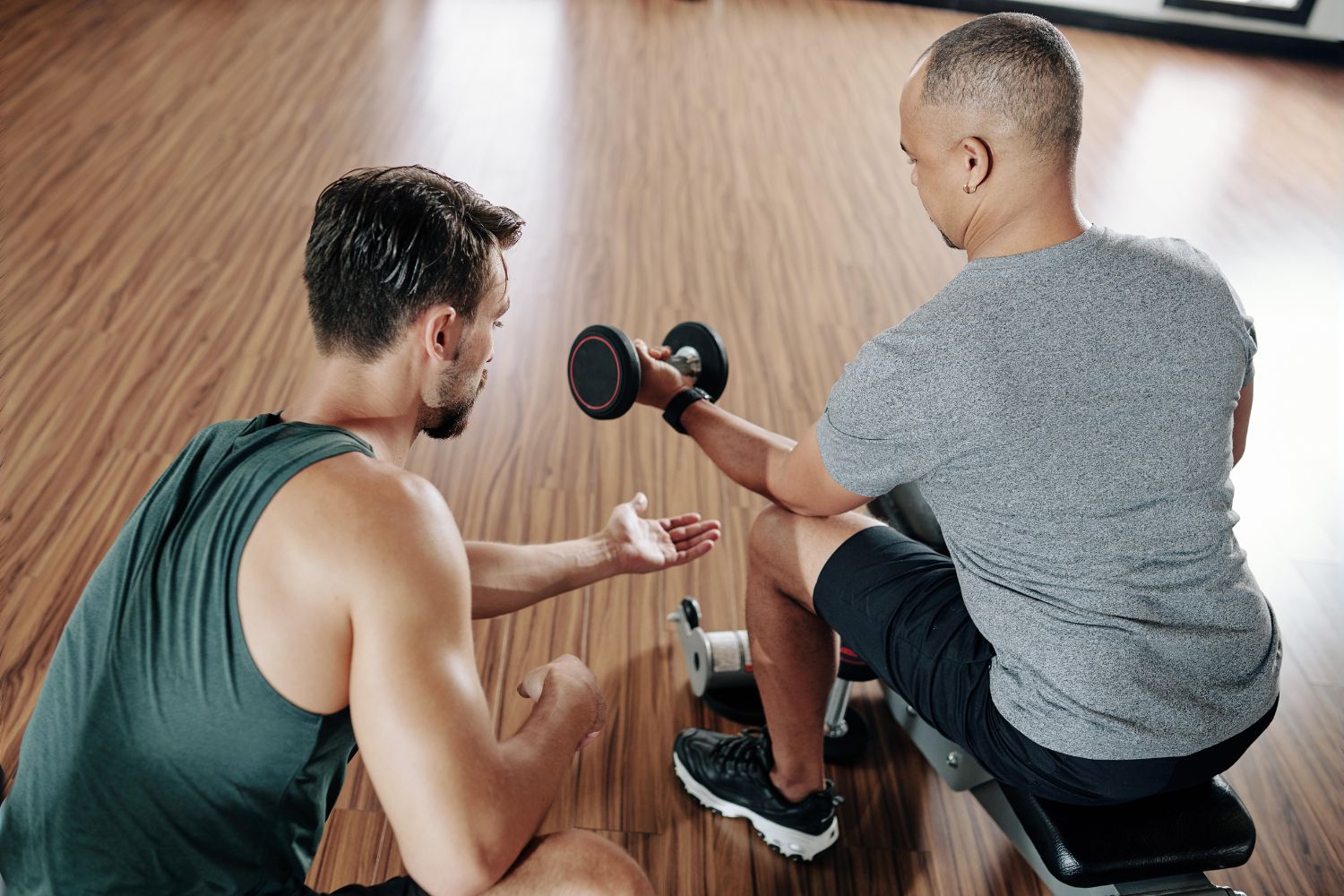surface veins to the heart and lungs. The clot can be dangerous on its own, as it blocks blood flow. It can also prove fatal if it dislodges and travels into the heart or lungs, where it can cause a Pulmonary Embolism.
Pregnant people are 5x more likely to develop a DVT. So, it is essential to know the symptoms to look out for, how to reduce the risk of developing this condition, and how to manage and treat it if you develop it.
Symptoms to look out for
With a DVT, you will typically get:
- Redness in the affected area
- A heavy feeling in the affected limb
- Pain
- Purplish extremities - most often the tips of the toes
Unlike muscle cramps, DVT causes swelling and discomfort, and pain associated with this condition will not go away with stretching.
It’s also important to note that 82% of DVT cases occur in the left leg.
Dangerous complications
A DVT is a serious medical concern. While the clot can dissolve on its own and doesn’t often constitute a medical emergency, you should still see a doctor to see what needs to be done. If the clot is left alone, it may grow to completely restrict blood flow through a deep vein, making it harder for you and your growing baby to get the nutrients and oxygen you need. It may also cause permanent swelling in the vein and damage to the vein wall, making you more susceptible to varicose veins.
If the blood clot dislodges, it can travel to the lungs, causing a Pulmonary Embolism. The symptoms include:
- Chest pains
- Trouble breathing
- Faining (if your blood pressure suddenly dips because of the clot)
You may also experience a cough with bloody mucus, fever, clammy skin, rapid or irregular heartbeat, lightheadedness, or dizziness. If you suspect PE, go to your nearest hospital as soon as possible.
Reducing the risk of DVT in pregnancy
VenoTrain Maternity Compression Stockings
Fortunately, there are ways to reduce your risk of Deep Vein Thrombosis during pregnancy.
- Yoga: Pregnancy-safe exercises like prenatal yoga, walking, and swimming will improve cardiovascular health.
- Try to move around every ~30 minutes when awake. Getting in a few minutes of movement will boost blood flow, reducing the risk of blood cells clumping together into a clot.
- Compression: Maternity Compression Stockings stimulate the muscles and squeeze blood out of congested surface veins, boosting circulation. (not to mention, compression can also help with leg cramps!)
- Staying hydrated: Drink at least 8 glasses of water when pregnant and 10-12 when breastfeeding. If it’s hot or you’re exercising, drink more.
Treatment of DVT in pregnancy
Your doctor may refer you to a hematologist (blood specialist) to pursue treatment. Typically, specialists treat DVT through:
- IVC Filters: these are tiny filtration caps that surgeons insert into the vein to catch a clot should it dislodge.
- Anticoagulants (blood thinners): these medications are often taken orally. They do not dissolve a clot but will stop it from growing larger and more dangerous. These CANNOT be taken once labour starts or within 48 hours of a planned cesarian.
- Thrombolytics: These medications are designed to break clots. They activate plasminogen, a protein in the liver. The plasminogen then generates the blood enzyme plasmin, which breaks up the fibrin protein, making up the clot.
To sum up
Pregnancy is a very exciting time! Unfortunately, it also increases your risk of complications like Deep Vein Thrombosis. As this is a serious medical condition, you need to be alert for any signs of a blood clot, take extra measures to minimise your risk of developing one, and see your doctor as soon as possible if you suspect you have a clot.
MORE INFORMATION
If you require assistance selecting the right product for your needs or wearing the brace, call us on 098015660 or contact us via live chat.
Do you have private health? Most private health extras will cover Bauerfeind Products. Check to see if yours is included. Bauerfeind Private Health Insurance Inquiry.
Bauerfeind was founded in 1929, and since then, we've worked tirelessly to develop and improve our extensive range of braces, insoles, and compression products. Our mission is to provide you with top-of-the-line supports so you can reach your fitness goals or live life without pain holding you back.
Every product is produced entirely in our facilities in Germany with the guidance of doctors, clinics, and orthopaedic technicians.

















